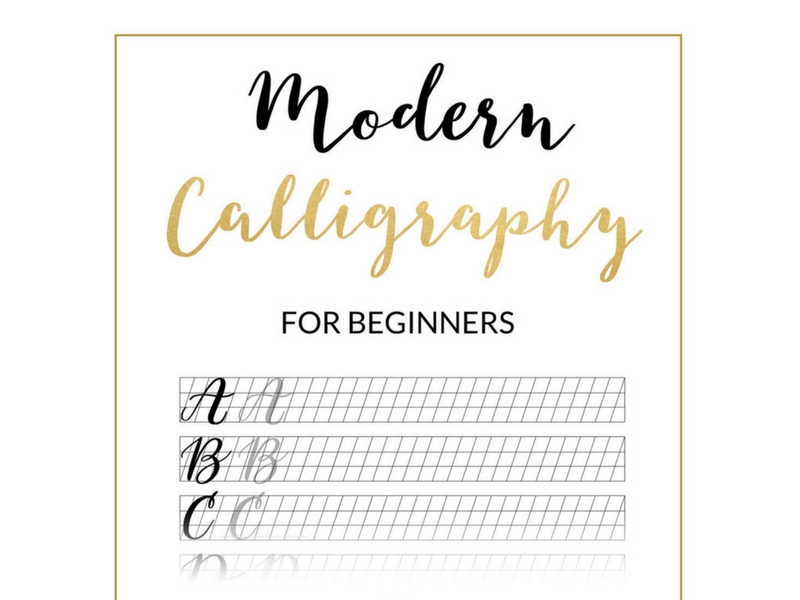 May
02
May
02
How to Get Into Calligraphy As a Hobby
- May 2, 2018
- 0 Comment(s)
Calligraphy, which translates as “beautiful writing” in Greek, is the practice of creating art, elegant letters on the page. It can be a little tricky at first, but once you master the basics you’ll be able to practice almost anywhere. While mastering basics, get involved with other calligraphers for encouragement, support, and inspiration. If you find this hobby to your liking, you can improve with practice sheets and calligraphy books.
Learning the Basics
1.Learn broad-edged calligraphy for a bold style
Broad edge calligraphy is one of the two main styles of Western calligraphy. It is characterized by bold, disjointed strokes. Though striking, artistic touches can be difficult with the pens used in this style.
- The pens used in broad-edged calligraphy can only be pulled when writing, which limits your range of artistic motion somewhat.
- With enough practice, many of the techniques used in pointed pen calligraphy can be imitated even with a broad-edged pen.
2. Focus on pointed pen calligraphy for creative results
Pointed pen is the second (and more common) style in Western calligraphy. This style is smoother, more responsive, and allows more creative freedom.
- Though generally considered more difficult, this style will yield the flowing calligraphy most familiar to people.
- Learning more than one style at a time will make it easier to confuse the unique characteristics of each, so you might want to master them one at a time.
3.Buy a calligraphy starter kit

Along with your pen, you’re also going to need ink, paper, and nibs (writing tips) if you’re using a straight or oblique holder. These supplies are often bundled together in calligraphy starter kits sold online and in hobby stores.
- Fountain pens are versatile and good for on-the-go calligraphy, but straight and oblique holders for nibs (which are then dipped in ink) are the traditional standard.
- Holders generally require nibs, and even fountain pen nibs will wear out with time. Some nibs might work better for you than others, but Nikko G nibs are a favorite among calligraphers.
- Purchase smooth, non-fibrous paper, like Rhodia Lined Paper. Most kinds of cartridge paperwork as well and are relatively inexpensive.
- Each ink will have unique features. Walnut ink is one of the easiest to use, but Iron Gall ink and Walker’s Copperplate are two popular brands to keep in mind
4.Familiarize yourself with different calligraphy alphabets
Alongside the two styles of calligraphy, there are uncountable alphabets. In calligraphy, alphabets (also called scripts) are the equivalent of a font. Each script has its own unique features.
Related post: WESTERN CALLIGRAPHY
5.Buy and use a calligraphy practice book
Calligraphy books are available at most bookstores, hobby stores, and online. As a cheaper option, you could print out practice materials from a website online. Use these materials to practice the basics.
- The stroke order for alphabets oftentimes comes with alphabet practice resources. As you become more comfortable with calligraphy, stroke order will become more intuitive
6. Get a feel for stroke order
Generally, each letter is made up of a combination of different strokes. These strokes sometimes differ slightly from alphabet to alphabet. To make mastering a script easier, perfect the basic strokes before attempting full letters or words.
Improving Your Skill
1. Use practice books or sheets
Practice books can be bought at hobby stores or online, though many calligraphy sites offer free practice sheets for common alphabets online. Practice books/sheets give you the chance to trace examples, which will improve your muscle memory and freehand skill
2. Read calligraphy books
There are many books that chronicle the changes in various calligraphy alphabets. These books also offer a great deal of food for thought where design is concerned, making them a valuable resource for artists, designers, editors, and more.

3.Imitate your favorite calligraphers
Once you have the basics under your belt, you can start imitating your favorite scripts to compose messages, label letters, address wedding invitations, and so on. Snap pictures of cool alphabets you see on-the-go so you can try to imitate them later.
Source: Wikihow
